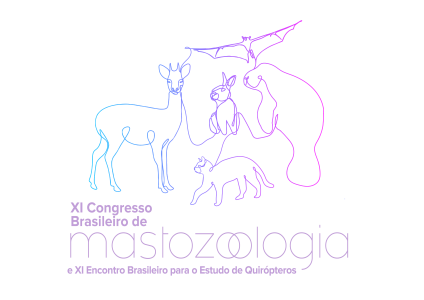Dados do Trabalho
Título:
IDENTIFYING INDIVIDUALS FROM CAMERA TRAP IMAGES, DENSITY AND DISTRIBUTION OF JAGUARS IN EASTERN BRAZILIAN AMAZON
Resumo:
The eastern Brazilian Amazon is mostly impacted by anthropogenic disturbances such as cattle raising, agriculture, logging and mining, which result in environmental degradation. Large mammals tend to be especially vulnerable to landscape changes, as they are often associated with preserved environments and large continuous forested areas. Large felids, top predators, such as the Panthera onca, are among the species most affected by anthropogenic disturbances, leading to a cascade of reactions in the rest of the food chain, and consequently in the ecosystem, known as the top-down effect. This species is an indicator of environmental quality, although it also occurs in degraded environments due to recent and abrupt degradation of the environment. Based on that the objective of the present study is to document the identification of individual jaguars and provide information on the density and spatial distribution of jaguars in a degraded landscape with high anthropogenic pressure. For this, we collected images of P. onca in the bauxite mine of Mineração Paragominas S.A., Paragominas municipality, state of Pará. For that, we used automatic camera traps set at 42 camera sites during the period March 2014 to December 2020. At 11 of the sites, we installed cameras double so that we could photograph both sides of jaguars that passed between the two cameras. We used the color patterns (rosettes) specific to each individual to identify the jaguar specimens through the machine learning software HotSpotter. We evaluated 1,103 images with signs of jaguars taken at 30 of the camera sites. We identified individual jaguars from 488 (44%) of these pictures taken at 18 of the sites. Twenty-one different individuals were identified based on pictures of the left side of which 13 also had pictures of the right side. Most observations were made in 2015 (29) and 2018 (23). A Relative Abundance Index was high in 2014 and 2015 compared to the values in the years 2016 to 2020. The number of different individuals observed during each sampling year varied from three (2020) to nine (2018). We used the highest number of individuals observed during one year as a minimum estimate for the number of individual jaguars in the study area. Thus, the minimum number of individuals in the studied area was nine jaguars per 188.764 km2, in other words, 4.77 jaguars per 100 km2. This minimum jaguar density found in our study seems to be high taking into account that a large part of the study area is at a high level of anthropization. However, it is important to note that the vast majority of the identified individuals were photographed in forest areas, while few records were obtained in anthropic altered environments. Besides that, the farms present in the surroundings also have areas of forest remnants, which should serve as a habitat for some of the individuals. The present study gives background information that is crucial for planning the establishment of buffer areas for the maintenance of jaguars in the studied area.
Keywords: Camera traps, Density, Distribution, Jaguars, Mining, Panthera onca
Financiamento:
Biodiversity Research Consortium Brazil-Norway (BRC)
Área
Conservação
Autores
Halicia Celeste, Øystein Wiig, Karollyna da Silva Teixeira, Leonardo Sena, Geovana Linhares de Oliveira, Ana Cristina Mendes-Oliveira
